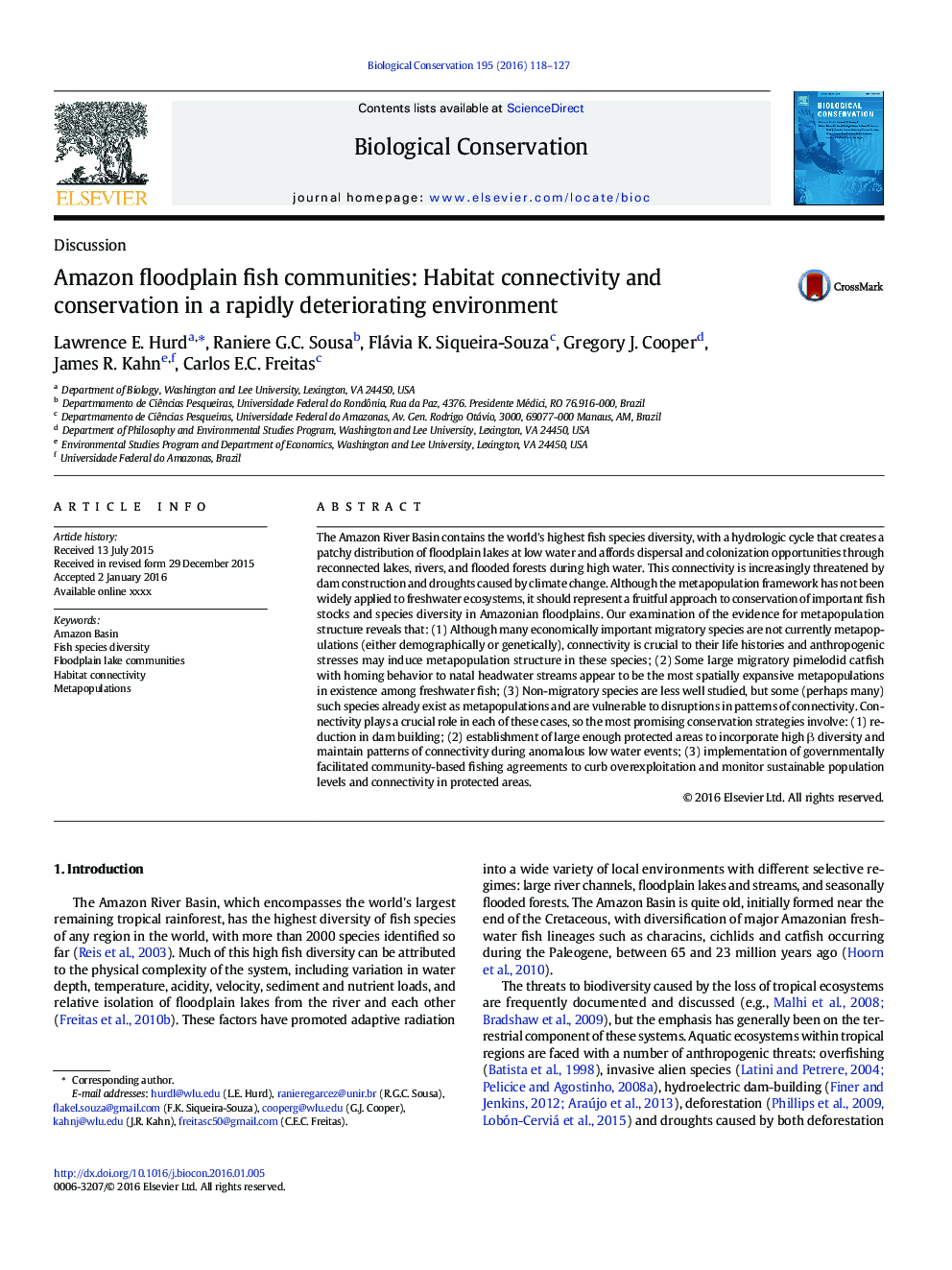| کد مقاله | کد نشریه | سال انتشار | مقاله انگلیسی | نسخه تمام متن |
|---|---|---|---|---|
| 6298761 | 1617906 | 2016 | 10 صفحه PDF | دانلود رایگان |
عنوان انگلیسی مقاله ISI
Amazon floodplain fish communities: Habitat connectivity and conservation in a rapidly deteriorating environment
ترجمه فارسی عنوان
جوامع ماهیان سواحل آمازون: اتصال محیط زیست و حفاظت از محیط زیست به سرعت در حال رو به زوال است
دانلود مقاله + سفارش ترجمه
دانلود مقاله ISI انگلیسی
رایگان برای ایرانیان
کلمات کلیدی
حوضه آمازون، تنوع گونه های ماهی، جوامع دریاچه سیلابین، اتصال به محیط زیست، جمعیت متقابل،
موضوعات مرتبط
علوم زیستی و بیوفناوری
علوم کشاورزی و بیولوژیک
بوم شناسی، تکامل، رفتار و سامانه شناسی
چکیده انگلیسی
The Amazon River Basin contains the world's highest fish species diversity, with a hydrologic cycle that creates a patchy distribution of floodplain lakes at low water and affords dispersal and colonization opportunities through reconnected lakes, rivers, and flooded forests during high water. This connectivity is increasingly threatened by dam construction and droughts caused by climate change. Although the metapopulation framework has not been widely applied to freshwater ecosystems, it should represent a fruitful approach to conservation of important fish stocks and species diversity in Amazonian floodplains. Our examination of the evidence for metapopulation structure reveals that: (1) Although many economically important migratory species are not currently metapopulations (either demographically or genetically), connectivity is crucial to their life histories and anthropogenic stresses may induce metapopulation structure in these species; (2) Some large migratory pimelodid catfish with homing behavior to natal headwater streams appear to be the most spatially expansive metapopulations in existence among freshwater fish; (3) Non-migratory species are less well studied, but some (perhaps many) such species already exist as metapopulations and are vulnerable to disruptions in patterns of connectivity. Connectivity plays a crucial role in each of these cases, so the most promising conservation strategies involve: (1) reduction in dam building; (2) establishment of large enough protected areas to incorporate high β diversity and maintain patterns of connectivity during anomalous low water events; (3) implementation of governmentally facilitated community-based fishing agreements to curb overexploitation and monitor sustainable population levels and connectivity in protected areas.
ناشر
Database: Elsevier - ScienceDirect (ساینس دایرکت)
Journal: Biological Conservation - Volume 195, March 2016, Pages 118-127
Journal: Biological Conservation - Volume 195, March 2016, Pages 118-127
نویسندگان
Lawrence E. Hurd, Raniere G.C. Sousa, Flávia K. Siqueira-Souza, Gregory J. Cooper, James R. Kahn, Carlos E.C. Freitas,
